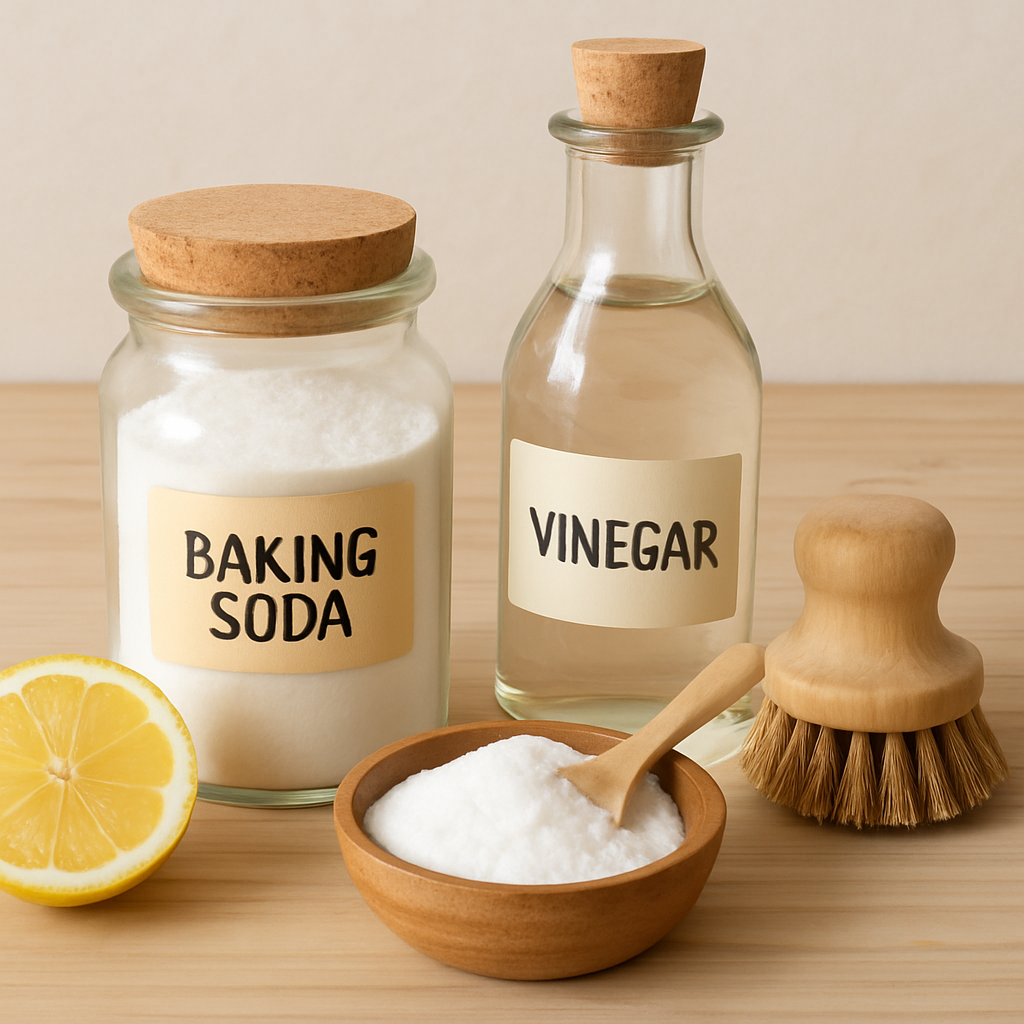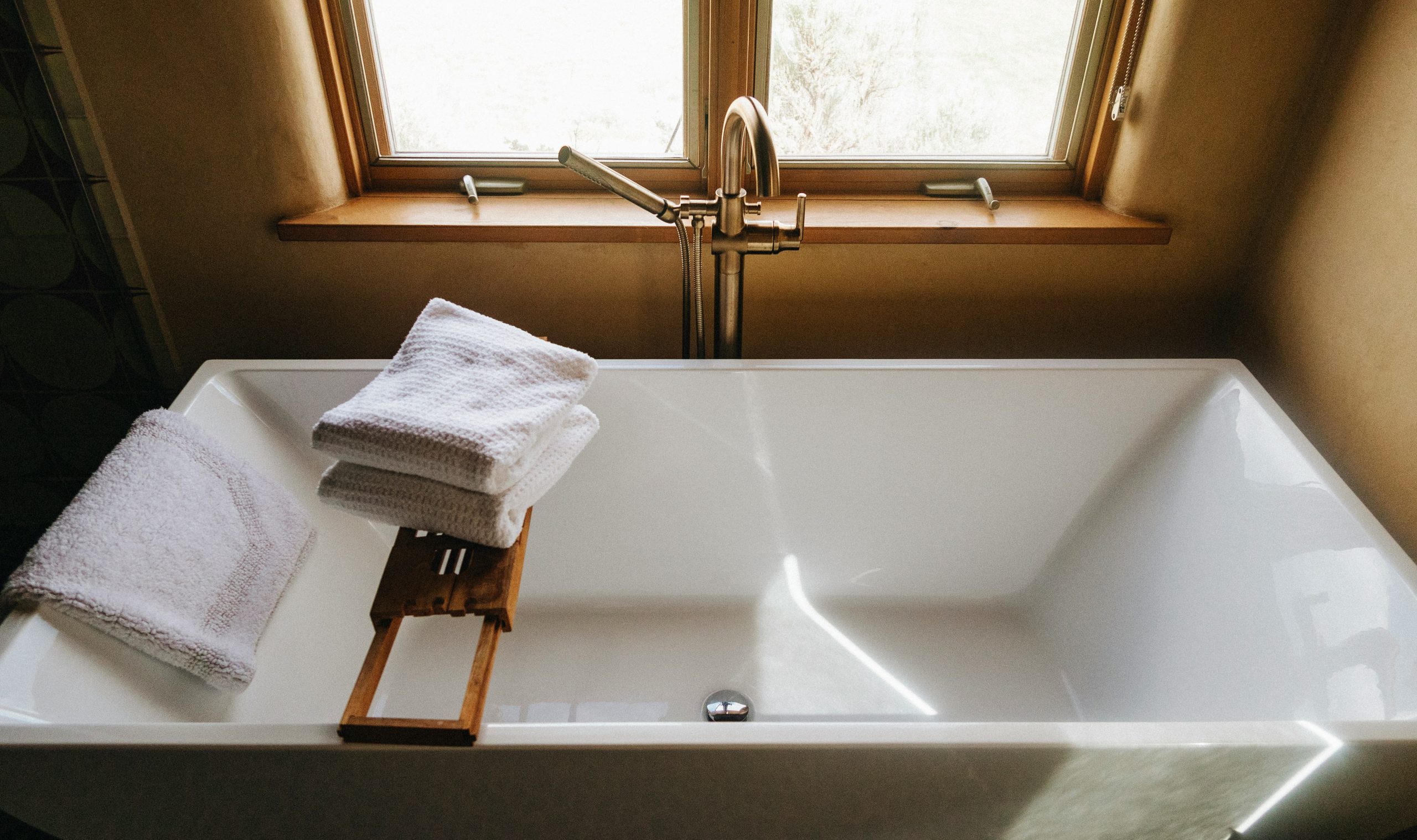Yellow water stains in your bathtub can be a frustrating sight. They often result from hard water, which is rich in minerals like iron and magnesium. These stains can make your bathroom look unclean, even when it’s not.
Cleaning these stains doesn’t require harsh chemicals. Many people prefer to avoid bleach due to its strong smell and potential health risks. Fortunately, there are practical, natural methods to tackle these stubborn stains.
In this guide, we’ll explore various ways to clean bathtub stains. We’ll focus on using natural cleaning solutions and provide practical tips. You’ll learn how to maintain a sparkling clean bathtub without the bleach.
Whether you’re a homeowner or a renter, these bathtub cleaning tips will help you keep your bathroom looking fresh and inviting.
What Causes Yellow Water Stains in Bathtubs?
Yellow stains in bathtubs often result from hard water. Hard water contains high levels of minerals such as iron and magnesium. Over time, these minerals can leave unsightly yellow marks on your bathtub surface.
There are other potential culprits behind these stubborn stains. For instance, soaps, shampoos, and bath oils can contribute to staining over time. These products leave behind residues that combine with mineral deposits, leading to the accumulation of unwanted substances.
Here are the common causes of yellow stains:
- Hard water minerals (iron and magnesium)
- Soap scum buildup
- Oils and bath products
Understanding these causes is crucial for effective cleaning of yellow water stains on bathtubs. By understanding the source, you can select the most effective cleaning strategy to address the issue.

Essential Supplies for Bathtub Cleaning (Without the Bleach)
Cleaning a bathtub effectively without bleach requires the right supplies. Natural cleaning agents are not only safe but also cost-effective. They can tackle tough stains without damaging the surface of your bathtub.
Here are some essentials for a non-bleach cleaning approach:
- White vinegar: Great for cutting through mineral deposits
- Baking soda: Acts as a gentle abrasive
- Lemon juice: Natural bleaching properties
- Hydrogen peroxide: For those tougher stains
- Cream of tartar: Often used in stain-removing pastes
- Non-abrasive scrubber: To avoid scratching the surface
Gathering these supplies will prepare you for effective bathtub cleaning. Additionally, these items are versatile, making them useful for other household cleaning tasks as well.

Step-by-Step Guide: Natural Methods to Clean Bathtub Stains
Tired of staring at those stubborn yellow stains? Natural solutions can be remarkably effective. Here’s how to tackle them without harsh chemicals.
Step 1: Preparing the Bathtub
Start by rinsing the bathtub with warm water. This loosens any surface dirt. It also makes the cleaning process more efficient.
Step 2: Applying Vinegar and Baking Soda
Create a cleaning paste by mixing equal parts vinegar and baking soda. Spread this over the stained areas. Let it sit for at least 20 minutes.
Step 3: Scrubbing the Stains
With a non-abrasive sponge, gently scrub the stained spots. The paste should help lift away mineral deposits. Remember to rinse frequently.
Step 4: Using Lemon Juice for Stubborn Stains
For tougher stains, apply lemon juice directly to the area. Its natural acidity helps in breaking down discoloration. Leave it on for about 15 minutes before scrubbing again.
Alternate Method: Hydrogen Peroxide Paste
Another effective mixture uses hydrogen peroxide. Combine it with cream of tartar to form a paste. This is particularly useful for persistent stains.
- Apply the paste to the stain and leave it for 10 minutes.
- Scrub gently and rinse thoroughly.
Finishing Touch: Rinse Thoroughly
Finally, rinse the entire bathtub with clean water. This helps remove any residue from the cleaning agents. Your bathtub should now look refreshed and cleaner.

Using Commercial Cleaners Safely and Effectively
Sometimes, natural methods may not be sufficient. In such cases, commercial cleaners offer a powerful alternative. However, they must be used with care to avoid damage.
Before applying any commercial product, read the instructions thoroughly. This ensures proper use and effectiveness. Some formulas may require special handling.
Always test the cleaner on a small area first. This helps confirm that it won’t harm the bathtub’s finish. Once you’re satisfied, proceed cautiously with the whole application.
- Wear gloves to protect your skin.
- Ensure proper ventilation to avoid inhaling fumes.
- Follow the recommended time for letting the cleaner sit.
Commercial cleaners can be harsh, so rinse thoroughly after use to avoid irritation. A final rinse guarantees that no harmful residue remains. Following these tips keeps your bathtub looking spotless.

Tips for Preventing Yellow Water Stains in the Future
Preventing yellow water stains is easier with regular maintenance. A key to avoiding stains is frequent and straightforward cleaning. This keeps your bathtub pristine and reduces the workload over time.
Start by wiping down your bathtub after each use. This helps reduce moisture and mineral deposits. Make it a habit, and you’ll notice a significant difference.
Consider installing a water softener. Hard water contains minerals that lead to staining. Softened water can greatly diminish these deposits.
- Regular cleaning prevents buildup.
- Use water softeners to reduce mineral deposits.
- Maintain proper ventilation to avoid dampness.
Educate everyone in the household about these tips. Sharing responsibility helps maintain cleanliness effortlessly. Making a few minor changes now can prevent stubborn stains later.

Frequently Asked Questions About Bathtub Cleaning
What causes yellow stains in bathtubs? Hard water, rich in minerals like iron, often causes yellow stains. Over time, these minerals accumulate and become visible.
Can I use bleach to clean bathtub stains? While bleach is effective, it’s harsh and can damage surfaces. Opt for natural methods or less abrasive commercial products instead.
How often should I clean my bathtub? Ideally, clean your bathtub weekly. Regular maintenance prevents mineral buildup and keeps your tub sparkling clean.
- What is hard water? High mineral content causes staining.
- Is bleach safe? Effective but harsh; consider alternatives.
- Cleaning frequency? Weekly maintenance is recommended.
Addressing these questions helps maintain clean and hygienic bathrooms. Taking preventive measures keeps inquiries like these at bay.
Conclusion: Keep Your Bathtub Sparkling Clean
A shiny and spotless bathtub enhances the appeal of any bathroom. By using natural methods and avoiding harsh chemicals, you protect both your bathroom fixtures and the environment. Regular cleaning routines effectively prevent the onset of stubborn stains.
In addition to cleaning, adopting preventive habits ensures long-term results. Installing a water softener reduces future mineral deposits. Remember, a little maintenance today saves a lot of work tomorrow. Armed with these tips and strategies, keeping your bathtub in pristine condition becomes effortless. Embrace these practices for a clean and inviting bathroom ambiance.
